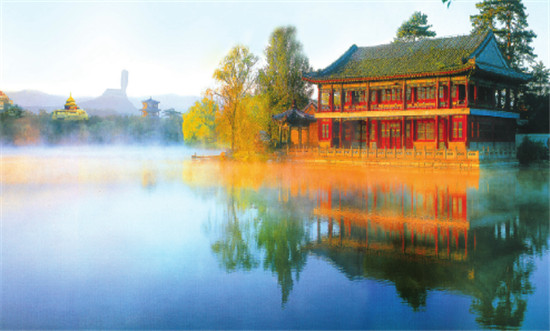Province's stunning history, scenery attract visitors
 |
|
The Chengde Mountain Resort has a style similar to that of the Summer Palace in Beijing, but is larger. [Photo provided to China Daily] |
From the Shanhai Pass all the way to Zhangjiakou in the northwest of Hebei, the province has one of the best-preserved great wall sections in China, among which sites like Jinshanling, Zijingguan, Chajianling-to name just a few-are favored by sightseers and hikers.
Hebei was called Zhili during the Qing Dynasty. Zhili means an administrative region directly under the central government and also a military unit protecting neighboring Beijing, which was chosen by the Qing government as the national capital.
The Zhili governor's office is still kept intact in the central Hebei city of Baoding-which literally means "safeguarding peace". It is a now popular attraction for tourists.
Hebei's position in politics during the Qing Dynasty was second only to the capital city of Beijing.
Chengde in north Hebei was regarded by Qing rulers as the summer capital. The city, about 200 kilometers to the north of Beijing, is much cooler than the latter in summer.
The Chengde Mountain Resort is another central government compound used by Qing rulers in summer.
Emperor Xianfeng died at the mountain resort when escaping the invasion of British and French armies in the early 1860s, leaving his wife, Empress Dowager Cixi, ruling China for more than 40 years.
The mountain resort is also home to a magnificent royal garden, which might be the largest in the world, with a style similar to that of the Summer Palace in Beijing, but is larger.
After one or two days' of touring Chengde, tourists can go to Weichang county in its north, which is home to a large Qing Dynasty royal hunting range called Mulan Weichang.














